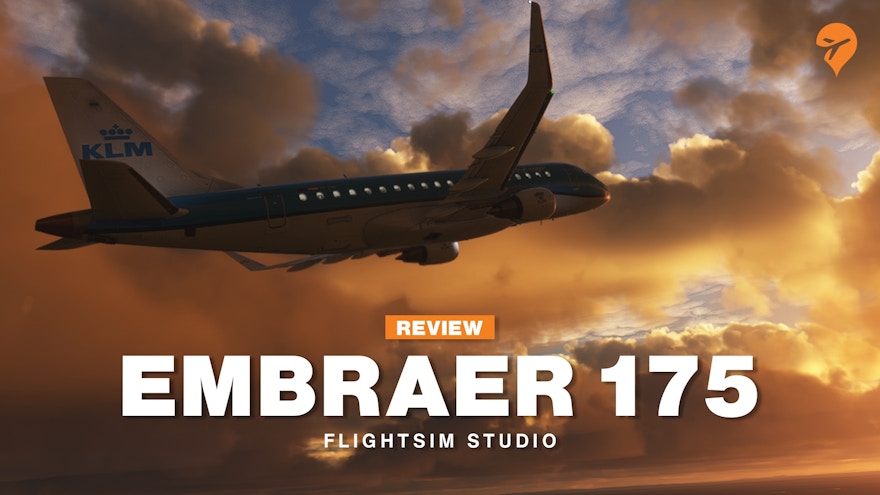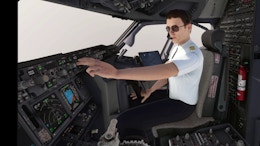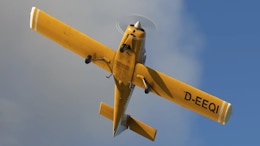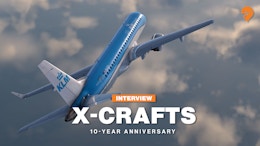Brazil’s ‘Jungle Jet’, the Embraer 175, was launched in July 2005. The dainty-looking regional jet holds between 76-88 seats and was designed for short to mid-range flights, achieving ‘greater productivity and higher utilization’ than similar competitor aircraft already on the scene.
In the virtual world of flight simulation, namely Microsoft Flight Simulator, that pool of competition is much smaller, with only a handful of regional jets having been brought to the popular sim.

FlightSim Studio has entered the foray, with their highly anticipated Embraer 175 for MSFS. Still in its early access phase, it is important to note that the aircraft comes with a promise of further updates and future system implementation. As the developers themselves have made clear, ‘this is not a study-level simulation yet. If you are looking for such, wait for the final release!’. Bear that in mind!
Regardless, with the E175 early access version scheduled to be released to the public on the 10th of January, we dive in and take a first look at this long-awaited regional jet.
3D Model

Having initially opened the sim, my first impressions are good. Very good. This bird certainly looks the part. Perhaps it’s the love of X-Plane in me, but with the 3D model created by X-Crafts, a well-known company from the X-Plane community, the team has captured the sleek-looking modern feel of the aircraft. The fuselage looks sharp, it looks in proportion, and all in all, it looks fantastic.
With a quick click of a button, I plunge the sim into darkness. The Embraer’s distinctive strobe lights dazzle the exterior, and the landing lights glow against the tarmac and brush the side of the fuselage. Another step in the right direction. One could, however, argue that the landing lights in the daylight seem remarkably bright.

The team boasts that their success in emulating the aircraft’s exterior was by taking advantage of native technologies such as detail decals, PBR texturing, and performance optimization. The latter certainly seems true. On my mid-range rig, the frames are a consistent 45FPS when in an external view, and around 40FPS inside.
In addition, a number of animations were added, such as the cockpit windows and door can be opened, sun visors can be placed, and more.
In short, this is a good-looking aeroplane. From the E175’s I’ve seen in reality, this looks pretty spot on. But as we all know, it’s fairly difficult to fly an aeroplane from outside. Let’s jump in.
Flight Instruments/Flight Management system
Sitting in the business end of the jet, is where things get a little complicated. As an early access aircraft, it’s important to remember that this aircraft is still being developed. That said, here the aircraft lets itself down… for now.
On first impressions, the cockpit texturing looks a little bland, nor does it look lifelike. There is no charm or character, instead, it looks like a cardboard cut-out. Perhaps some weathering, scratches, dirt… something, would give it a bit of life.
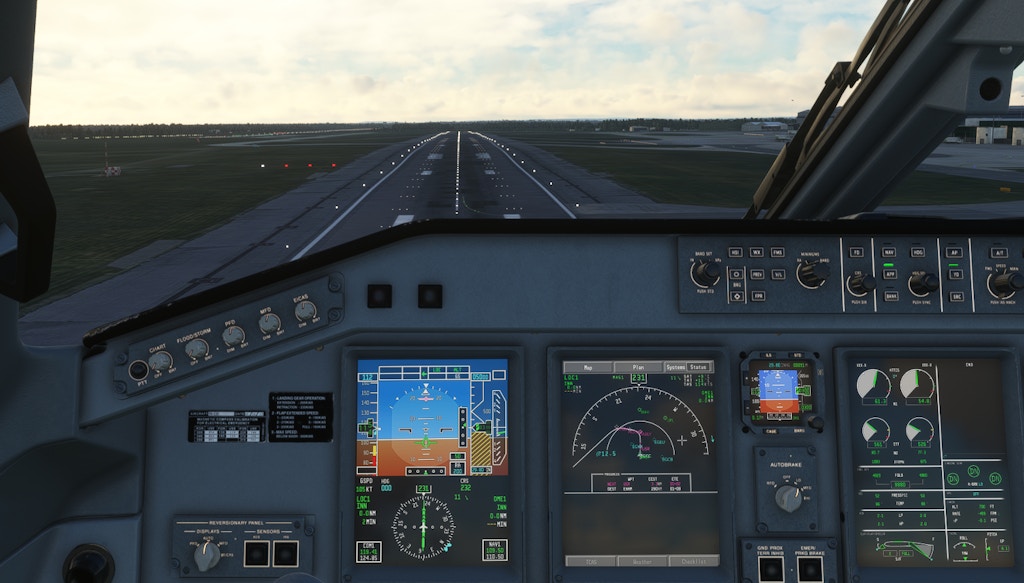
A few custom animations are included; the sun visor can be moved, the steering tiller moves nicely and the jump seat can be stowed and unfolded.
Diving into the MCDU, it’s clear to see the FMS is not a custom-built product. Using the default FMS by Microsoft Flight Simulator, the basics required to complete a flight from A to B are there, but that’s all. Furthermore, complications arise in flying curved departures, such as the SANBA departures from Manchester in the UK (a procedure designed with a curve around a town to prevent noise complaints, but instead the FlightSim Studios E175 will blast you off in a straight line… sorry virtual neighbours!)
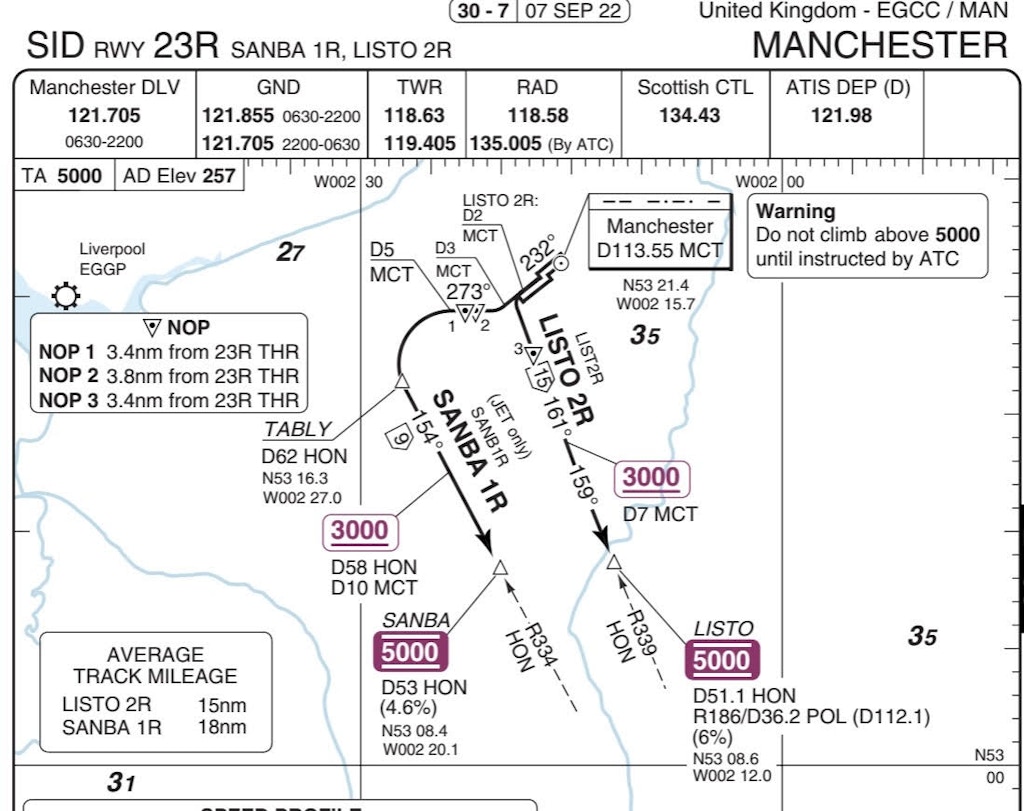
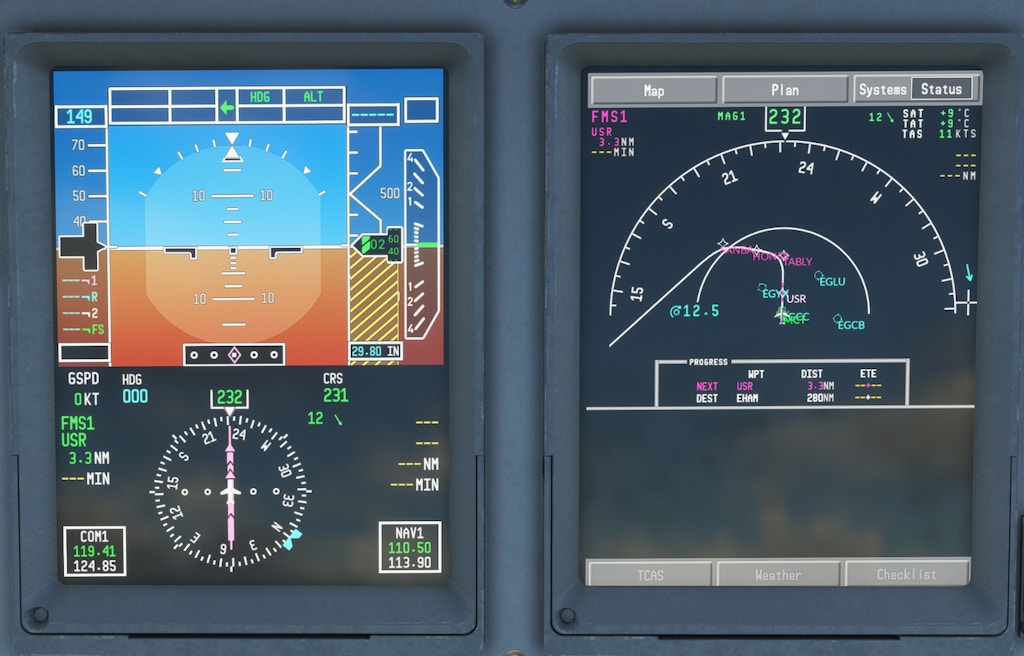
Modifications concerning SID and STAR selection and waypoint management are available in the sim’s primal sense, but until the team’s custom-built replica arrives, the list of noticeable features is limited for now.
The team stated that, ‘there are still limitations which do not allow us to create a complete replica. Therefore we have decided to code a completely own FMS system, which will contain all features. Fortunately, we have the necessary skills in our team to implement such a complex system. However, this cannot be done in a short time but requires a lot of patience and testing. We have already completed 60% of the backend logic, but there is still a long way to go.’
Similarly, the aircraft currently uses the MSFS standards for its auto-flight systems. VNAV isn’t implemented… yet, and this is a feature the team says they are working on and have suggested workarounds for pilots in the meantime, such as the use of FLCH, or level change, in the climb and descent.
Crucially, capturing the localiser and glideslope of an ILS (instrument landing system) proves to be hit-and-miss. Indications are present, but the aircraft doesn’t necessarily follow them. I can hear the die-hard aviators and flight instructors screaming ‘just fly the damned aeroplane’… and this is true, one could simply disconnect the automation and hand-fly, but when the indications themselves seem erratic and unreliable, this is somewhat difficult to do.
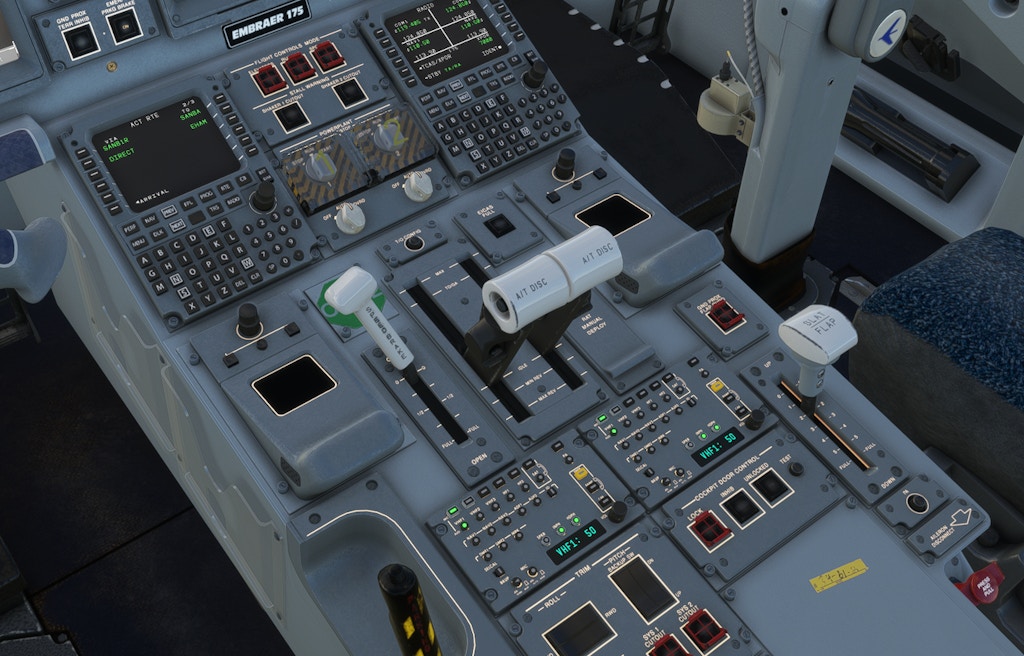
Most importantly, and arguably most noticeable, is the lag on the PFD (primary flight display), even using a ‘Medium refresh rate’ in the simulator settings, which seemingly works fine for the vast majority of other add-ons in the simulator. The PFD’s graphic depictions are remarkably laggy, with rapid speed changes it’s difficult to follow, turns are a challenge to coordinate, and makes information a chore to interpret. In my opinion, this is a huge stumbling block for the aircraft, especially using the default flight automation software. But the aircraft will, according to the team’s own development plan, change and improve over time.
FlightSim Studios insist that all pertinent functions of the PFD, MFD, and EICAS ‘have already been implemented, as well as the IESS, the digital clock, and the audio control panel.’ The MFD has been modelled with some limited systems already available. The distinctive Embraer systems and status pages on the MFD display the flight controls, electrical systems, and hydraulics systems amongst other, and the team intend to roll out further systems down the line.

Flight Dynamics
As is the usual caveat for the majority of reviews; I am not an Embraer pilot. I do not know how an Embraer flies, nor am I an expert in the use of its systems. I am, however, a commercial jet-rated pilot. I understand the feel of a jet aircraft and I appreciate the theory behind jet aircraft.
First of all, the pitch-power coupling on final approach does seem realistic, with the moments of movement responding as it would in reality, although in general, the aircraft seems to fly somewhat erratically, twitchy even. A slightly overenthusiastic use of the ailerons transforms the aircraft momentarily into an F16, banking excessively quickly.
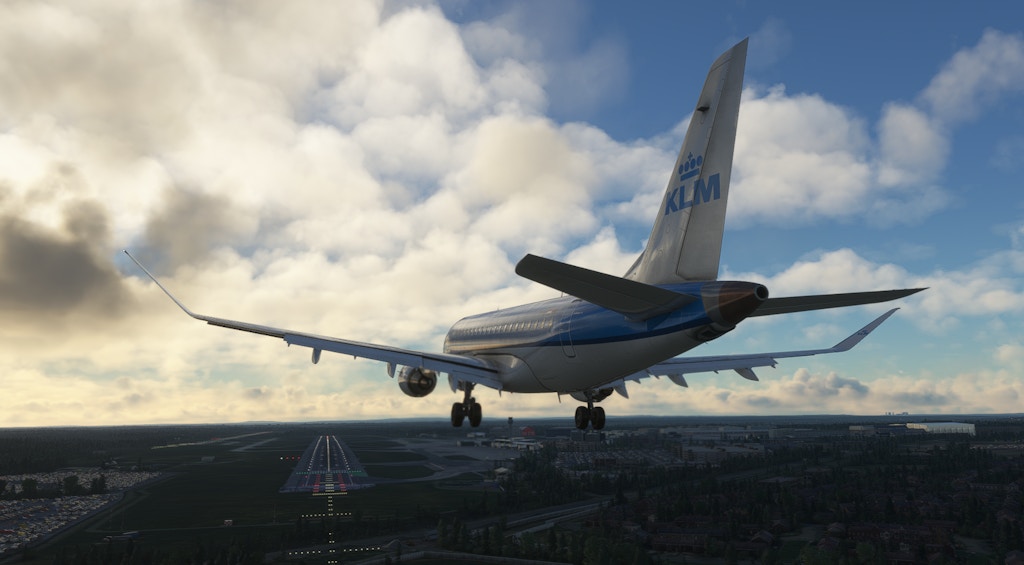
The team says they have a flight dynamics developer who is also a pilot, saying that ‘the configuration of the E-Jets is not only based on tables from manuals, but also on real experience values.’ Without knowing what aircraft this particular pilot flies, one must take them at their word. But in my opinion, the aircraft for the most part flies a like nimble fighter jet instead of a regional jetliner.
Sounds

Externally, the E175 seems very quiet, arguably too quiet. The engine sounds appear faint, with the differentiation between idle and full thrust extremely difficult to identify. However, the reverse thrust sounds do sound fairly realistic, and at least these are audible. An area in which the FlightSim Studio E175 does excel is its internal cabin modelling. Unfortunately, once again the interior engine sounds are extremely difficult to hear, and you could be forgiven for thinking you’ve forgotten to start the engines at all! But the avionics fans and pack air flow within the cockpit and throughout the cabin seem reasonable and relatively well done.
Cabin Model
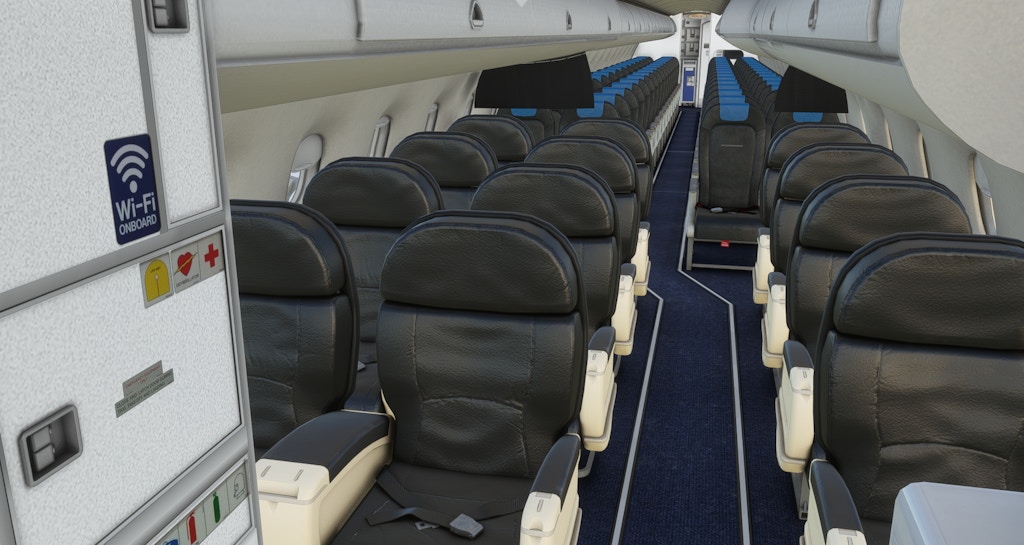
Inside the aircraft’s snug cabin, the modelling looks as good as the externals. Passenger seats look crisp, the wing views look realistic and some customisation in terms of airline-specific magazines in the seat pockets adds a very nice feel.
Overhead lockers are unable to be opened, nor are the window blinds, a feature that some simmers could see as a unique addition, but one that is currently unable in this version of the aircraft.
A decent amount of wing flex is modelled, neither looking too rigid nor excessive, it looks natural.

Summary
The FlightSim Studios E175 is early access, and it shows. Sure, you can complete a flight from A to B successfully, but the aircraft is basic in every sense apart from its looks. The lack of advanced systems and the use of basic flight automatics means this aircraft is ultimately a payware exterior model, for now.
As the developers themselves, and throughout this review myself, have tried to reiterate, this is an early access version product, with a transparent team behind the aircraft and a clearly outlined development plan there for all to see. In short, the aircraft has potential. But for now, the practice of pre-release purchases seems to be weaselling its way into the norm in flight simulation.
Would I pay money for the product in its current guise? No. Do I appreciate and believe they show an intention to better and develop the product over time? We shall have to wait and see.
With this financial conundrum facing budding Embraer pilots in the sim, there’s no denying that paying around €30 for a far-off finished product is going to split opinion. We have seen that already.
There is still a very, very long way to go until the aircraft is finished, but the roadmap paints a potentially prosperous future for the E175.
The aircraft will reach its official early access release on January 10th 2023.
